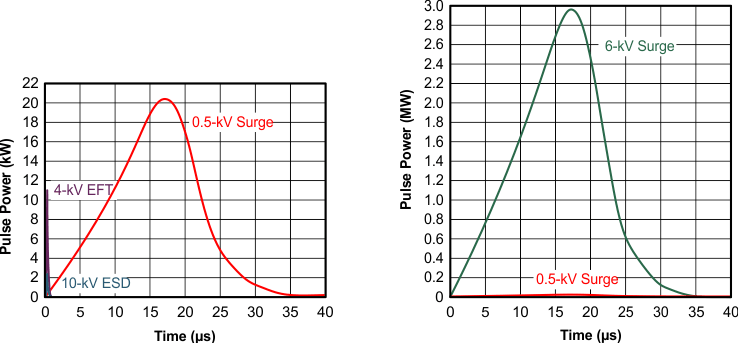ZHCSPL9A January 2024 – August 2024 THVD2419 , THVD2429
PRODUCTION DATA
8.3.3 Surge Protection
Surge transients often result from lightning strikes (direct strike or an indirect strike which induce voltages and currents), or the switching of power systems, including load changes and short circuit switching. These transients are often encountered in industrial environments, such as factory automation and power-grid systems.
Figure 8-5 compares the pulse-power of the EFT and surge transients with the power caused by an IEC ESD transient. The diagram on the left shows the relative pulse-power for a 0.5kV surge transient and 4kV EFT transient, both of which dwarf the 10kV ESD transient visible in the lower-left corner. 500V surge transients are representative of events that may occur in factory environments in industrial and process automation.
The diagram on the right shows the pulse-power of a 6kV surge transient, relative to the same 0.5kV surge transient. 6kV surge transients are most likely to occur in power generation and power-grid systems.
 Figure 8-5 Power Comparison of ESD, EFT, and Surge Transients
Figure 8-5 Power Comparison of ESD, EFT, and Surge TransientsFigure 8-6 shows the test setup used to validate THVD24x9 surge performance according to the IEC 61000-4-5 1.2/50μs surge pulse.
 Figure 8-6 THVD24x9 Surge Test
Setup
Figure 8-6 THVD24x9 Surge Test
SetupTHVD24x9 product family is robust up to ±3kV surge transients without the need for any external components. The bus pin voltage is clamped by the integrated surge protection diodes such that the internal circuitry is not damaged during the surge event.